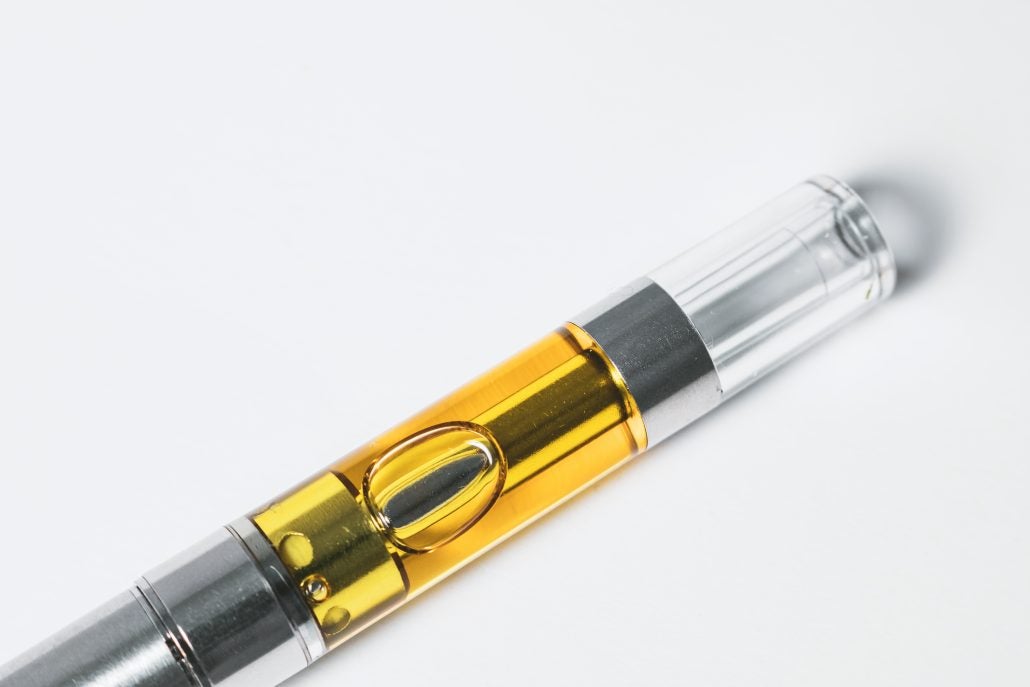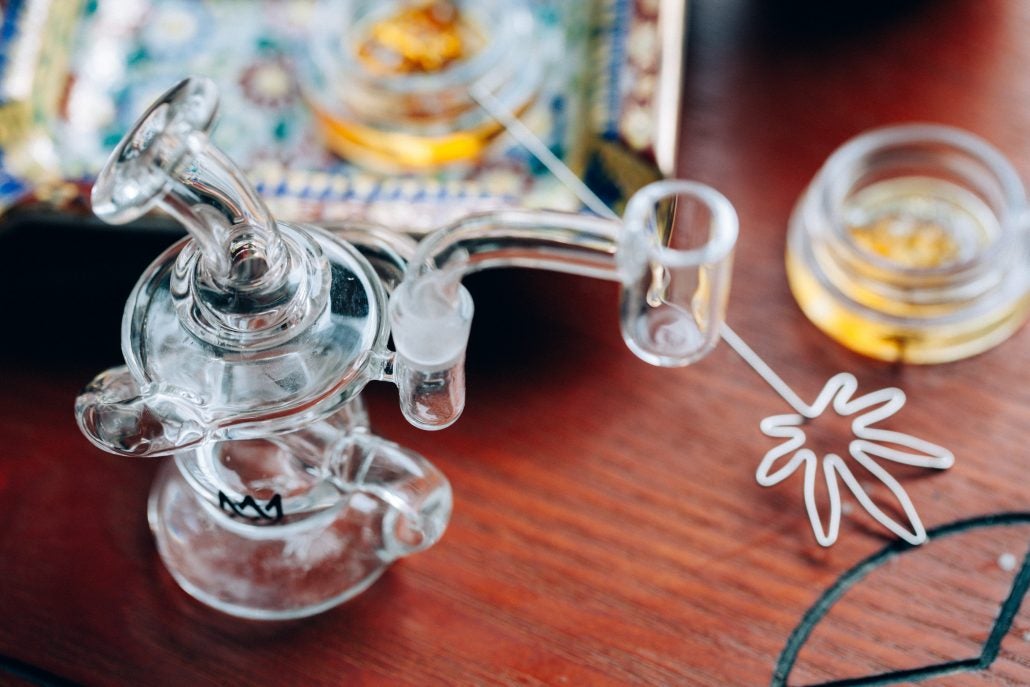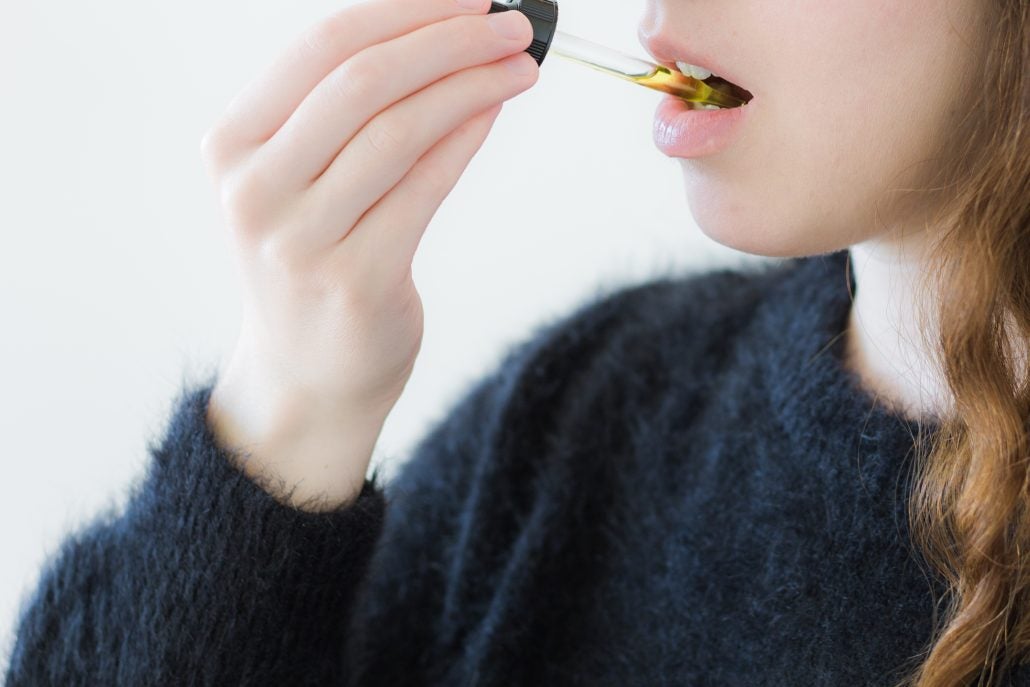From campfires to bong hits—no doubt about it, inhaling smoke can affect your lungs. While research suggests that the risks of smoking cannabis, in particular, are relatively minor compared to that of, say, smoking cigarettes, there are plenty of alternatives to smoking that let you enjoy the many benefits of cannabis without the health risks.
What Are the Healthiest Ways to Consume Weed?
Smoking alternatives like edibles and vape pens were gaining traction in the mainstream long before weed was legalized in 2018, and in the years since then, the options for smoke-free ways to enjoy cannabis have only grown.
So let’s take a look at 5 of the most popular alternatives to smoking cannabis and learn why so many people are putting down the joints and blunts and branching out with these instead.
1. Vape Pens and Cartridges
Vape pens are a relatively new development in the cannabis market. Most vape pens consist of a battery and a cartridge that contains either cannabis distillate or oil.
Vape pens are very popular because their compact size makes them extremely portable- they can easily fit in your pocket or purse, making them perfect for the days when you’re on the go.
There’s practically zero prep time, too. There’s no joint to roll, or dab nail to heat, or anything else like that. Just make sure your cartridge is full, your battery is charged, and you’re good to go! If you’re using a disposable vape pen, it’s even easier because the cartridge is already loaded, and the battery should last the entire time.
We sell a variety of weed cartridges of all strains and flavours.
Although there currently isn’t enough data to fully understand the effects of vaping, it does minimize the chance of lung damage due to carcinogens released during the burning process—a risk present with any smoke.
However, steer clear of cannabis products containing vitamin E acetate as it has been linked to certain lung injuries.
What about flower vaporizers?
Overall, vaping can be better alternative to smoking, especially if you use actual cannabis flower instead of vaping concentrates. A study from 2006 revealed that vaping cannabis flower instead of concentrates presents even less risk to your respiratory tract.

2. Dabbing
Many consumers consider dabbing the best way to consume concentrates without smoking because it offers a cleaner high, and you don’t have to light your weed on fire to do it. Compared to smoking, dabbing delivers THC and CBD through vaporization, which doesn’t have the adverse effects of smoke.
While conventional wisdom says that you should always heat concentrates to more than 700 degrees Fahrenheit (around 371 degrees Celsius), dabbing typically aims for lower temperatures to preserve terpene content. Why? Because the terpenes are the aromatic oils that are responsible for the aroma and flavours of cannabis. More terpenes mean you get a tastier dab, but many terpenes have a boiling point between 120 – 260°C, and going beyond that range will destroy them.
In fact, preserving terpene content is another reason that dabbing is healthier than smoking. Recent research has found that terpenes have their own health benefits—even more so when they aren’t isolated and are instead taken with the other cannabinoids and compounds of the cannabis plant. This phenomenon is known as the entourage effect, where the terpenes, cannabinoids, and other cannabis compounds interact with one another to produce different, and often better, effects than on their own.

3. Edibles and Munchies
Cannabis edibles don’t present any danger to your respiratory health and are even better for you than vaping or dabbing.
Overall, edibles are one of the healthiest ways to consume weed as you aren’t inhaling anything into your lungs, neither smoke nor vapour.
Plus, if you’re mindful of what you eat, they can be a great source of nourishment.
You can choose from an endless variety of edibles. You can make your brownies with cannabis-infused coconut oil, and once you learn how to make cannabutter, the possibilities are endless. For more info, check out our article “How to Make Cannabutter for Edibles“.
A potential downside of edibles is that they usually take much longer to kick in, and the resulting high can last a long time as well. If you’re new to edibles, you’ll want to make sure your schedule is cleared for the next few hours at least, so you can relax and enjoy the high without worrying about having to be anywhere or doing anything.
Another thing to watch out for with edibles is eating too many too fast, and you may have to work through trial-and-error before you figure out your ideal dosage. When taking a new edible, it’s essential to wait a few hours to see how it affects you before taking more, as edibles can take a considerable amount of time to kick in.
4. Sublingual Administration
Most people think sublingual cannabis supplements are the same as edibles, but they’re entirely different. Even though both edibles and sublingual products are taken orally, that’s where the similarities end. With edibles, you eat them as you would any other food, and they pass through your digestive system, getting broken down by enzymes in your stomach, intestines, and liver.
On the other hand, sublingual administration is taken ‘under the tongue’, where the compounds dissolve and are absorbed into the blood through the tiny capillaries in the area. That means sublingual administration bypasses all of the steps of digestion, making the onset of effects much quicker- while edibles can take hours to digest and kick in, you’ll usually feel the effects of sublingual administration within 15-30 minutes.
The most popular form of sublingual cannabis are tinctures that you can easily dose under your tongue for maximum absorption.
Many sublingual supplements have potent effects, and researchers are still evaluating their full benefits. However, compared to smoking and dabbing, they’re one of the best alternatives to smoking weed. They are also great for therapeutic use, especially for people with generalized anxiety and PTSD. Learn more about sublingual tinctures with our Guide to Phoenix Tears & RSO.

5. Ointments, Lotions, and Tinctures
Topical applications of cannabis include balms, patches, ointments, massage oils, and creams. You apply them to your skin, and they won’t cause any psychoactive reaction, meaning you won’t get high from them. That’s because the topicals don’t penetrate deep enough into the skin, so the cannabinoids in them aren’t absorbed into the bloodstream, unless you’re using a transdermal patch or something similar. But even then, a transdermal patch will be unlikely to have any psychoactive effects as the cannabinoids are slowly absorbed for hours.
While experts debate the effectiveness of weed for deodorants and sunblock lotions, they can help with muscle pain and soreness associated with athletic activities.
Some sources even suggest that topical cannabis may be useful in reducing the symptoms of certain skin conditions, such as acne, eczema, and psoriasis. To date, there are no known health risks of using topical cannabis.
For a list of the best THC tinctures, check out our blog post.
If I Have to Smoke, How Should I Smoke?
Long-time weed smokers and new users finding their groove still turn to smoking cannabis despite its impact on the lungs, either through habit, preference, or both. But here are a few useful tips to minimize the health risks of smoking weed if you do smoke:
- Don’t hold your hits as long. Holding weed smoke in your lungs can expose your alveoli to more tar than breathing it out right away. Remember that weed smoke contains some of the chemicals also found in tobacco smoke—albeit far less—and tobacco smokers usually exhale the smoke in a matter of seconds.
- Shop smart. Only purchase cannabis products that are free from harmful flavourings and chemicals. If applicable, look for third-party lab testing.
- Go glass. Plastic bongs can contain phthalates and bisphenol A that can cause cancer when heated to high temperatures and then inhaled. Use glass or wooden pipes and bongs, and you can stay safe when you smoke.
Bongs vs. Blunts
People once believed that bongs filtered out the contaminants of cannabis as it absorbed the dry heat from a hit to offer a smoother, more refreshing experience than smoking a joint. Bongs do offer some filtration and eliminate the presence of rolling papers, but the impact on your lungs is virtually the same as you are still inhaling smoke, which do not make them an alternative to smoking at all.
Try Something New
Ready to quit smoking and start enjoying a cleaner, healthier way to consume cannabis? Check out our store to find top-quality edibles, vape oil, tinctures, topicals, and much more. We proudly support responsible cannabis consumption.
